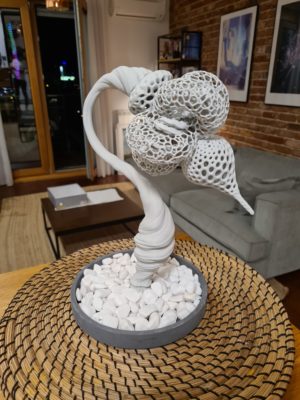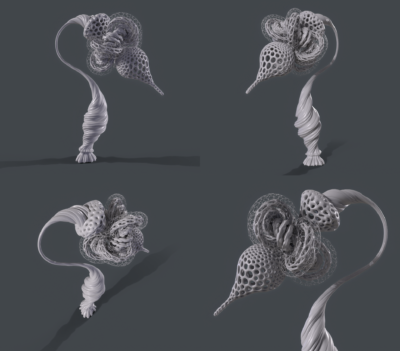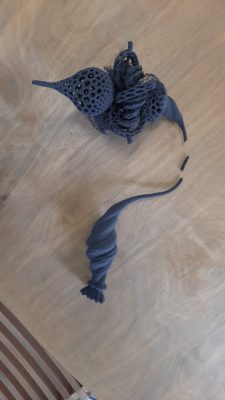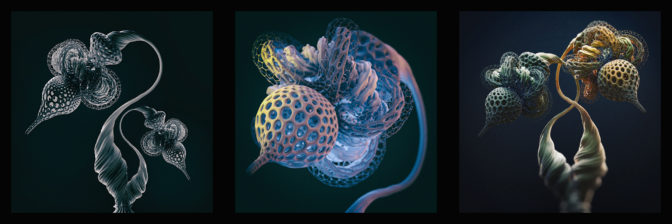Looking for a change of art? Try using AI — that’s what 3D artist Nikola Damjanov is doing.
Based in Serbia, Damjanov has over 15 years of experience in the graphics industry, from making 3D models and animations to creating high-quality visual effects for music videos and movies. Now an artist at game developer company Nordeus, Damajanov’s hobbies include dabbling in creative projects using the latest technologies, like NVIDIA RTX and AI.
Recently, Damjanov has been experimenting with generative art, which is the process of using algorithms to create new ideas, forms, shapes, colors or patterns. And when Damjanov was invited to participate in his country’s Art Biennale, an exhibit that features creative pieces from local artists, he decided to design something new — a 3D-printed sculpture.
With the help of NVIDIA RTX and AI, Damjanov accelerated his creative workflows and produced a physical 3D sculpture of a flower with intricate details and designs.
An AI for Art
To bring his sculpture to life, Damjanov started with the 3D digital design. His floral sculpture was inspired by the aesthetics of microfossils and radiolaria, which are intricate mineral skeletons.
 To capture such elaborate details, Damjanov used the NVIDIA Quadro RTX 6000 GPU, and tapped into the power of NVIDIA RTX rendering and AI denoising. These capabilities helped him easily create the 3D model and achieve the complex details of the flower for the sculpture.
To capture such elaborate details, Damjanov used the NVIDIA Quadro RTX 6000 GPU, and tapped into the power of NVIDIA RTX rendering and AI denoising. These capabilities helped him easily create the 3D model and achieve the complex details of the flower for the sculpture.
“NVIDIA RTX-powered AI denoising just makes look development way easier, because the feedback loop is much shorter now,” he said. “You can quickly get a very decent approximation of what the final render will look like.”
Damjanov then accomplished most of the RTX rendering and generative modeling in SideFX Houdini, a 3D animation application software, and the OTOY OctaneRender engine.
For Damjanov, setting up these rules and relationships in the system helped with iterations and design changes. With the rules in place, he could change minor details and aspects, and immediately see how the rest of the design would be affected by the tweaks. For example, Damjanov could alter a petal on the flower to be twice the current size, and everything else connected to the petal would react to the new size.

“Because it was a very intricate design, we had to test out and print specific parts to see what comes out,” he said. “I ran simulations to try to find an approximate center of mass. I also had to print specific parts to find a design that would be structurally sound when printed.”
 After three weeks of printing, Damjanov reached a 3D design that would produce the flower sculpture he envisioned for the Art Biennale.
After three weeks of printing, Damjanov reached a 3D design that would produce the flower sculpture he envisioned for the Art Biennale.
Damjanov uses RTX-powered AI denoising and rendering in most of his projects. He’s also experimenting with using game engines for his work, and implementing NVIDIA Deep Learning Super Sampling for increased graphics performance.
“I remember when most of my time was spent on waiting for something to finish, such as renders completed, maps baked, mesh processed — it was always a pain,” he said. “But with the sheer power and speed of RTX, artists have more time to spend on creative tasks.”
Check out Damjanov’s work on ArtStation and learn more about NVIDIA RTX.

